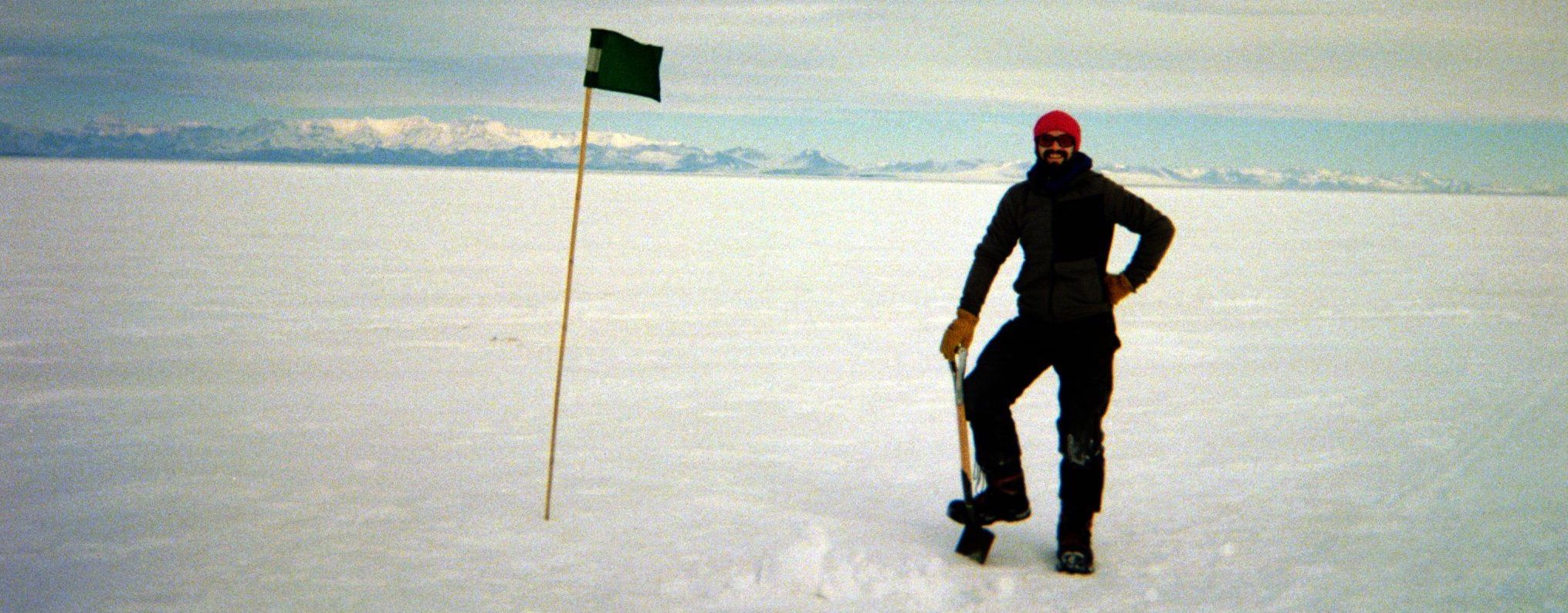Research

Tufts University Postdoctoral Researcher 2024-Present
The Glacier-Ocean-Melange model (GLACIOME)
Dense packs of icebergs and sea ice, known as ice mélange, persist in many fjords in Greenland, and potentially at many glaciers in Antarctica in the future. Observations suggest that ice mélange may directly affect iceberg calving by pressing against glacier termini and indirectly affect submarine melting by controlling where and when icebergs release their meltwater, which influences ocean heat transport towards glaciers. However, the interactions between ice mélange, ocean circulation, and iceberg calving have not systematically been investigated due to the difficult field environment. The GLACIOME project is investigating the complex interactions between glaciers, mélange and the ocean and provide the first comprehensive model of the co-evolution of these systems. I am working on coupling Mélange/Glacier model with the MITgcm model to capture feedbacks between the ocean and ice mélange. A part of this work is published at The Cryosphere. I have also made a demo of this work you can try for yourself here. This demo should run on a typical Mac laptop in 5-10 minutes. I am also working on making this iceberg package a part of the mainstream MITgcm, so keep an eye out for that!
Stanford University Geophysics PhD 2018-2024
Englacial Temperature and Rheological Feedbacks
Effective ice viscosity has a strong dependence on temperature, and conversely ice temperature is strongly impacted by local strain. With recent attention being directed at the rheology of ice and its power law form (n = 3, n = 4 rheology) an ambiguity arises as to whether enhanced shear is coming from englacial heating and n = 3 rheology, or can be explained with simply an n = 4 rheology and significantly less shear heating. Through 2-D thermomechanical modeling, I hope to explore this ambiguity, and see what resolution of englacial temperature measurement would be needed to distinguish these scenarios. This work is in early stages, please reach out if you’d like to chat more!
Radar Attenuation Signature of Temperate Antarctic Shear Margins
I develop and implement a process for using existing airborne radar surveys to test predicted 1-D temperature profiles of Antarctic shear margins. I use 2 existing 1-D temperature models and use the expected englacial thermal attenuation to predict an expected change in observed bed return power for radar profiles that cross shear margins. By comparing predicted and observed changes in bed return power, we can test the predicted englacial temperature profiles from these 1-D models. This work is published in Geophysical Research Letters with open access.
Migration of Thwaites Glacier Shear Margins
Thwaites Glacier, Antarctica, is losing ice rapidly, making it a major contributor to the uncertainty in current projections of global sea level rise. Many models have looked at how ice speed and thickness are likely to evolve over hundreds of years. Less scientific attention has been devoted to understanding the possibility that the main trunk of Thwaites Glacier might change in width. Here, we use a numerical model to show how ice thinning and could affect the width of the main trunk of Thwaites Glacier. We find that both lateral sides of Thwaites Glacier are prone to move, resulting in an overall widening of the main trunk when we apply thinning where it is currently observed. This widening of the glacier could speed up ongoing ice loss. To evaluate the sensitivity of our findings on conditions at the base of the ice sheet, which tend to affect ice speed sensitively, we look at four different cases of basal friction and use these to discuss what different bed friction means for where widening might occur and how pronounced it might be. We also discuss how our results could be tested against field data currently being acquired through the International Thwaites Glacier Collaboration. This work is published in the Journal of Geophysical Research: Earth Surface with open access.
The life and death of a subglacial lake in West Antarctica
I worked with Matt Siegfried and Ryan Venturelli (lead authors) on the investigation of Mercer Subglacial Lake. I processes radar data from the field site to constrain the change in ice thickness above the lake over the study period. This work is published in the Journal Geology.
Bistatic Radar Tomography of Shear Margins
I worked with Nicole Bienert (lead author) on developing a bi-static radar system for imaging englacial temperature signatures of shear margins. I helped develop the inversion scheme used to simultaneously invert for basal reflectivity and englacial temperature, and also provided modeled theoretical englacial temperature distributions for plausible antarctic shear margins. This work is published in IEEE Transactions on Geoscience and Remote Sensing.
Constraining Ice Sheet Basal Sliding and Horizontal Velocity Profiles Using a Stationary Phase Sensitive Radar Sounder
I developed an algorithm for constraining the 2D velocity field of an ice sheet using a stationary phase sensitive radar sounder. This work applies most directly to ApRES deployments on rapidly deforming ice streams where englacial layer slopes can be inferred from other radar processing methods. This work is published in the IEEE International Geoscience and Remote Sensing Symposium, 2021.
Stanford University Physics BS, Geophysics MS 2010-2014
Conduit Processes Driving Pre-explosive Harmonic Tremor
I worked with Professor Eric Dunham to investigate a physical mechanism to explain a series of rapidly repeating earthquakes that produced a pre-explosive harmonic tremor at Mt Redoubt in the 2009 eruption. We modeled the system of a pressurized conduit below a physical magma plug and how the changing compressibility of the magma in the conduit could produce the high stressing rates needed to explain the rapid earthquakes producing the tremor. This work was written up for my masters thesis but not published.